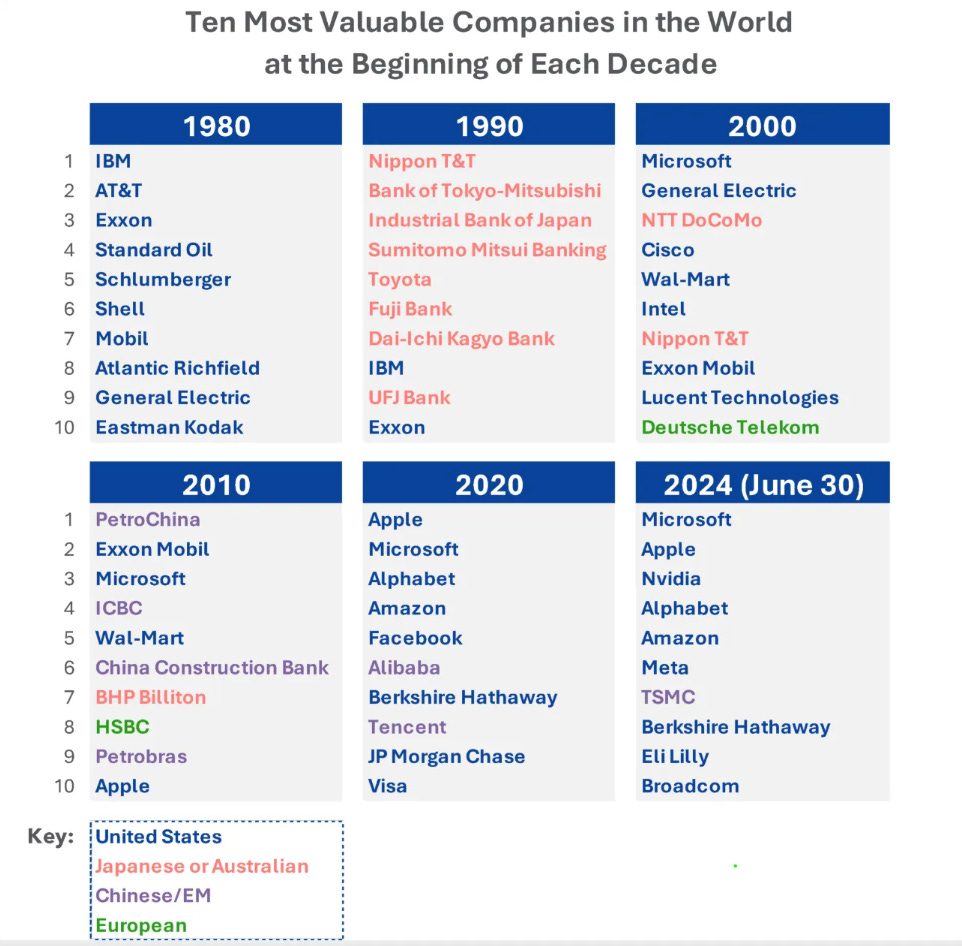Ferg's Finds
This is a short weekly email that covers a few things I’ve found interesting during the week.
Article
Rust Never Sleeps (May 2025)—David Iben
The markets are not inefficient because people are dumb or lazy or clueless. They are inefficient because people are irrational. They are fearful of missing out on the excitement, the riches. They understandably, yet regretfully, focus more on risks to their career than risks to the portfolios. They shy away from unpopularity (fading away) and run from pain. The longer something is out of favor, the greater the pain. The greater the pain, the greater the degree of undervaluation. That is why value investing has had such superior performance over the decades and why it has performed best following periods of underperformance.
“Value” stocks more than held their own during the past, desolate decade-and-a-half, and there are many reasons to be optimistic about the next decade. “Value” stocks are very attractively valued, many offer protection against the rusting away of the U.S. dollar (and other fiat currencies), they tend to own scarce goods that are desired by the world’s 8-billion people and are generally resistant to obsolescence. And, whereas inaction leads to rust, patience does not. The prospective “return on patience” is currently enticing.
Podcast/Video(s)
MacroVoices #483 Vincent Deluard: MAGA vs. Corporate America
Quote(s)
“Those who cannot remember the past are condemned to repeat it”
– G. Santayana
“In times of rapid change, experience can be your worst enemy.”
- John Paul Getty
Tweet/notes
The surprise with this IEA outlook was it actually had a measured outlook on coal instead of the fairy tale “stated policies” of previous outlooks pretending coal was about to roll over.
Although the jump in India is particularly noteworthy, construction on over 95 GW of new coal-fired power plants in China commenced last year – approximately nine times greater than the number of steam turbine orders in India over the same period. As a result, China’s annual coal-fired generation investment was USD 46 billion in 2024 and is expected to grow to USD 54 billion in 2025. The large pipeline of announced or permitted projects and a new policy allowing construction to continue to at least 2027 suggest that investment may continue for years to come.
Charts
While the rebel situation with Alphamin resolved surprisingly quickly, the longer-term tin thesis is still extremely bullish, as I went over in Bottleneck + Catalyst.
Tin inventories are continuing to draw down on the SHFE and LME, while it doesn’t look like Myanmar is coming to the rescue (or anywhere, for that matter).
Tin price hits week high on concerns about slow restart of Myanmar supply
Tin inventories in LME-registered warehouses are down 45% this year to 2,605 tons, the lowest since mid-2023, with 24% of the stocks marked as being prepared for delivery.
Something I'm Pondering
In reading David Iben’s piece “Rust Never Sleeps,” I was left pondering the effect of “rust” on tangibles, i.e., underinvestment in the old economy.
Tangibles have sunk to ~15% of US equities today and 8% if you look at the NASDAQ. Compare this to 40% tangibles for emerging markets equities and 60% for Chinese equities.
It’s been a continuous trend in the US the last three decades. Yes, a lot of value is added with tech, but a decent amount is on the back of outsourcing and underinvestment in tangibles.
However, when you broaden it to global companies, you see examples like PetroChina, Exxon, Walmart, BHP, and Petrobras made the top 10 in 2010.
I asked Grok about the top 10 companies in 2010, and it pegged them at 51% intangibles and 49% tangibles.
What will be the ratio of the top ten companies in 2030?
I've no idea, but I’d bet heavily there is going to be a significant rebalance from today's ratio of 90% intangible and 10% tangible.
I hope you’ve all been having a great week.
Cheers,
Ferg
P.S. We are currently in Dobrota, which is easily my favourite spot in all of Montenegro.











One of Simplify's ETFs, NXTI intangible core, has an interesting layer to add on top of value. Their idea is that corporate assets have have changed from brick & motor. It invests in high intangible assets to book.
Looks like an awesome view